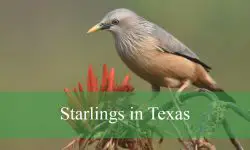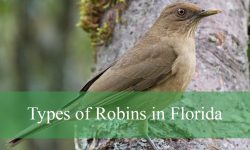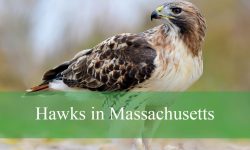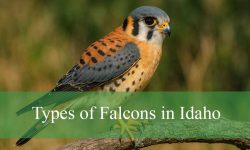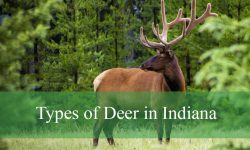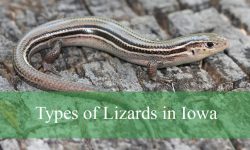Wild turkeys have long been part of the natural and cultural landscape of Massachusetts. With their fan-shaped tails, sharp eyesight, and confident strut, these birds seem almost prehistoric in presence. While many people associate turkeys with Thanksgiving and rural woodlands, few realize just how complex, adaptable, and surprising these birds truly are—especially in the context of Massachusetts. Over the past few decades, wild turkeys have made a remarkable comeback in the Bay State, becoming one of its most fascinating and, at times, controversial wild residents.
What makes their story so unique is not just their ecological role but also their behavior, their interactions with people, and the unexpected places they now call home. From the streets of Boston to the wooded Berkshires, turkeys in Massachusetts are rewriting the rules of how we understand urban wildlife. This article dives deep into their history, biology, behavior, and some truly shocking truths that most residents have no idea about.
The Wild Turkey’s Return: From Near Extinction to Everyday Sightings
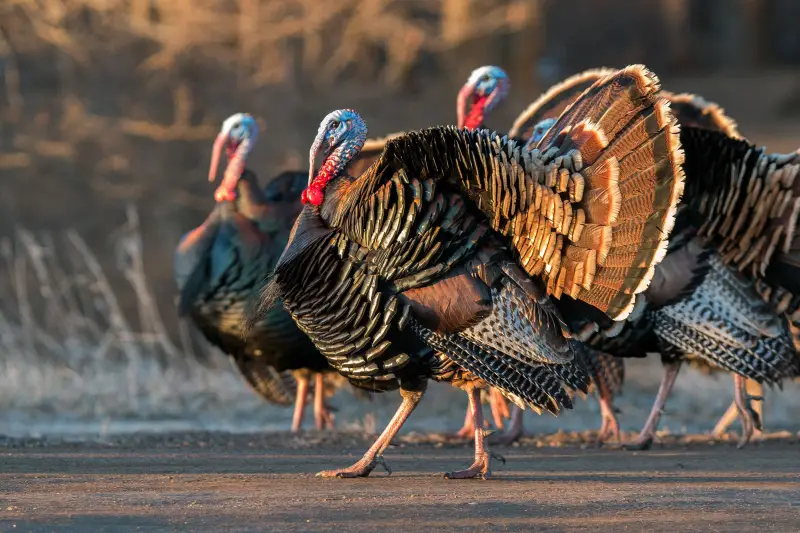
Not long ago, spotting a wild turkey in Massachusetts was nearly impossible. By the mid-1800s, wild turkeys were completely extirpated from the state, victims of deforestation, hunting, and habitat loss. For over a century, the native turkey was absent from the forests it once roamed freely. However, in the early 1970s, a state-led reintroduction project changed everything. A small group of wild turkeys was brought into western Massachusetts from New York, and the results exceeded all expectations.
Unlike earlier failed attempts involving pen-raised birds, these wild-caught turkeys thrived. They rapidly established breeding populations and began expanding across the state. What began as an experiment in Berkshire County has turned into a statewide phenomenon. Today, Massachusetts is home to an estimated 30,000 to 35,000 wild turkeys—a number that continues to grow as they adapt to new environments.
The successful reintroduction of turkeys in Massachusetts is considered one of the most impressive wildlife restoration efforts in North America. However, few anticipated just how well they would adapt—not only to forests but to towns, suburbs, and even bustling city neighborhoods.
Urban Turkeys: Why They’re Thriving in the Suburbs and Cities
One of the most surprising aspects of wild turkeys in Massachusetts is their affinity for urban and suburban areas. These birds, once restricted to remote woodlands, are now thriving on sidewalks, front lawns, and even schoolyards. The question many people ask is: Why would turkeys choose city streets over quiet forests?
The answer lies in the unique adaptability of the species. Wild turkeys are opportunistic foragers, eating everything from acorns and berries to insects and human food scraps. Urban areas offer a buffet of food sources, from bird feeders to garbage to ornamental plants. Additionally, suburban neighborhoods often provide safety from natural predators like coyotes and foxes, and the landscaping mimics the edge habitat turkeys naturally prefer.
These adaptable birds have also learned to navigate human activity. Some flocks have even been seen using crosswalks or congregating near schools, seemingly unbothered by traffic and people. Their boldness in city settings surprises many, and while some residents find them amusing, others have been startled by their growing presence.
Surprising Behaviors That Leave Residents Speechless
Turkeys in Massachusetts aren’t just showing up—they’re making an impression. From aggressive displays to traffic disruptions, their behavior can be bold, curious, and occasionally intimidating. In particular, male turkeys, or toms, become more assertive during the spring breeding season, engaging in dramatic strutting displays and sometimes perceiving humans as rivals.
There have been numerous reports of turkeys pecking at car bumpers, chasing joggers, and even blocking mail delivery in certain neighborhoods. These encounters, while often harmless, can be unnerving. Experts say that these behaviors are typically the result of turkeys seeing their reflections or reacting to perceived threats to their territory.
Interestingly, these displays of dominance and fearlessness are not typical in more remote populations. Turkeys living deep in the woods are far more cautious and elusive, suggesting that proximity to humans may actually be shaping the birds’ behavior over generations. The result is a more urban-savvy, confident turkey population that treats city blocks like their own stomping grounds.
The Turkey’s Role in Massachusetts Ecosystems
Beyond their dramatic comebacks and curious behaviors, wild turkeys play an important ecological role in the Massachusetts landscape. As omnivores and foragers, they influence plant regeneration by consuming seeds, nuts, and insects. They also help control pest populations by feeding on beetles, grasshoppers, and even small amphibians.
In forested areas, their scratching and leaf-turning behavior helps to aerate the soil and distribute plant matter, promoting a healthier understory. Their droppings fertilize the ground, and their nests offer shelter to smaller species after the breeding season ends. In essence, turkeys are ecosystem engineers, shaping their environment in subtle but vital ways.
Their presence also supports a broader food chain. Eggs and young poults may become food for raccoons, skunks, hawks, and snakes. Even adult turkeys fall prey to bobcats, coyotes, and great horned owls. This interconnectedness illustrates their importance not only as individual animals but as components of a larger web of life within the Massachusetts environment.
Are Turkeys Becoming a Problem?
While many celebrate the turkey’s return, not everyone is thrilled. In some communities, growing flocks have led to traffic jams, property damage, and aggressive encounters. Their presence around schools and residential areas has raised concerns about public safety, especially during the spring breeding season when males can become territorial.
In places like Brookline, Cambridge, and Newton, local officials have received numerous complaints about turkeys chasing children, blocking roads, and attacking reflective surfaces. Some residents have described feeling “trapped” in their homes by aggressive birds. While actual injuries are rare, the perception of threat has led to debates about whether turkeys should be managed more actively.
Wildlife agencies generally advise against feeding turkeys or encouraging close contact. Doing so can cause them to lose their fear of humans, which in turn can increase aggressive behavior. As the state continues to balance conservation success with urban management, the question remains: How close is too close when it comes to wild turkeys?
The Cultural Symbolism of Turkeys in Massachusetts
It’s easy to forget that turkeys are not just animals—they’re national icons. Benjamin Franklin once famously suggested the turkey as the national bird of the United States, calling it a “more respectable bird” than the bald eagle. In Massachusetts, where colonial history is deeply rooted, turkeys carry additional symbolic weight.
As native inhabitants of the region, turkeys were an essential food source for both Indigenous tribes and early settlers. Their feathers were used in ceremonial attire, and their presence was woven into oral traditions and seasonal patterns. Today, they are still closely associated with Thanksgiving, a holiday deeply tied to Massachusetts history through the story of Plymouth and the Pilgrims.
This blend of ecological relevance and cultural heritage gives the wild turkey a dual identity—both a living, breathing part of the natural world and a symbol of American tradition. In Massachusetts, few animals embody this duality so completely.
What Science Is Revealing About Their Behavior and Evolution
Recent studies of wild turkeys in Massachusetts and across the Northeast are offering new insights into how these birds are changing. Wildlife biologists have noted shifts in turkey nesting habits, changes in diet due to urban food availability, and even possible genetic adaptations linked to human proximity.
Behavioral studies indicate that turkeys in urbanized environments may be learning from each other, passing on behaviors such as approaching people, using sidewalks, and recognizing traffic patterns. This kind of observational learning challenges old assumptions that wild birds are driven purely by instinct.
Moreover, biologists are using GPS collars and tracking data to understand how far turkeys travel, how they establish territory, and what environmental cues they respond to most. The research is still ongoing, but what’s clear is that the turkey population in Massachusetts is becoming more intelligent, more adaptable, and more attuned to human society than ever before.
Coexisting with Wild Turkeys: A New Normal for Massachusetts
As wild turkeys continue to thrive in both rural and urban areas, learning how to coexist peacefully with them is increasingly important. For homeowners, this means avoiding feeding them, securing compost bins and trash, and discouraging aggressive behavior by not running or turning away when confronted.
Schools and parks may need to implement wildlife awareness programs, especially in areas with bold flocks. Understanding turkey body language—such as puffing up feathers, tail fanning, or gobbling—can help people avoid unnecessary conflict. For drivers, slowing down in known turkey zones during morning and evening hours can reduce collisions and protect both birds and people.
The presence of turkeys in Massachusetts is not a temporary phenomenon. They are now a part of the daily fabric of many communities, and adapting to their presence is part of modern life in the state.
FAQs About Turkeys in Massachusetts
What caused the decline of wild turkeys in Massachusetts originally?
Wild turkeys were nearly wiped out in Massachusetts by the late 1800s due to overhunting and large-scale deforestation, which destroyed their natural habitats.
How were wild turkeys successfully reintroduced to Massachusetts?
In the 1970s, a reintroduction program brought wild-caught turkeys from New York into Massachusetts. Unlike earlier attempts, these birds adapted well and quickly repopulated the state.
Why are turkeys increasingly seen in urban areas and suburbs?
Turkeys are highly adaptable and opportunistic feeders. Urban and suburban areas provide plentiful food, fewer predators, and suitable habitats, encouraging turkeys to thrive near humans.
Are turkeys in Massachusetts dangerous to people?
Generally, wild turkeys are not dangerous, but during mating season, males can become territorial and occasionally aggressive. Most negative encounters are avoidable with proper precautions.
How should residents manage conflicts with urban turkeys?
Avoid feeding turkeys, secure trash and compost, and maintain a safe distance. If turkeys act aggressively, do not run; instead, calmly back away or make yourself appear larger.
Do turkeys cause damage to property?
Turkeys may scratch lawns, damage garden plants, or cause minor disturbances, but significant property damage is uncommon.
What is the ecological role of wild turkeys in Massachusetts?
Wild turkeys help control insect populations, disperse seeds, aerate soil through foraging, and serve as prey for larger predators, contributing to ecosystem balance.
Can turkeys recognize humans and learn behaviors?
Studies suggest urban turkeys may recognize people and learn behaviors like crossing streets safely, showing a surprising level of adaptability and intelligence.
How large is the wild turkey population in Massachusetts today?
Current estimates suggest there are between 30,000 and 35,000 wild turkeys in Massachusetts, with populations continuing to grow.
Are wild turkeys protected by law in Massachusetts?
Yes, wild turkeys are protected under state wildlife laws, and hunting seasons are regulated to ensure sustainable populations.
Conclusion: A Comeback Few Expected
The story of turkeys in Massachusetts is one of the most unexpected wildlife success stories in the United States. From complete extinction within the state to neighborhood domination, their journey has shocked biologists, amused residents, and, at times, caused concern. But beneath the headlines and viral videos lies a deeper narrative: that of a resilient species reclaiming its place in a changing world.
Turkeys in Massachusetts are not just surviving—they’re redefining what it means to be wild in an urban age. Their intelligence, adaptability, and boldness challenge assumptions and invite us to reexamine our relationship with nature. In the end, their presence may be one of the clearest signs that wildlife is not just out there—it’s right here, sharing space with us, every day.

